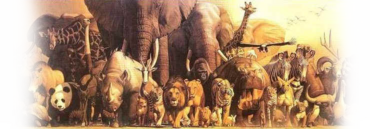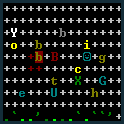- v50 information can now be added to pages in the main namespace. v0.47 information can still be found in the DF2014 namespace. See here for more details on the new versioning policy.
- Use this page to report any issues related to the migration.
Creature
| This article was migrated from DF2014:Creature and may be inaccurate for the current version of DF (v53.06). See this page for more information. |
v53.06 · v0.47.05 This article is about the current version of DF.Note that some content may still need to be updated. |
| This page has been updated for DF v0.42. (To view this page prior to the update click here.) |
In Dwarf Fortress, a creature is defined as any animate, normally-mobile (and for the sake of this article, non-vermin) being that can interact with the world and any element inside it. The creatures in the game range from being entirely realistic to completely mythical. Although most creatures are animals, dwarves, giant cave spiders, and even megabeasts are all also considered creatures. Various creatures can and will interact with a fortress or adventurer in many different ways.
Some creatures have skills that match what type of creature they are (e.g. monkeys having legendary climbing skill). Though most creatures can be found in any mode, some are exclusive to adventure mode or fortress mode. Some creatures are randomly and procedurally generated, meaning they could have different sprites in-game. Creatures of that type may have just one type of graphic in the list below.
Also note that creatures with the [ARENA_RESTRICTED] or [DOES_NOT_EXIST] tokens cannot be spawned in the object testing arena, similarly to vermin (e.g. flies, worms).
Many standard-sized creatures in the game take the space of a single tile, while many giant versions of creatures, including many types of beasts, may take up the space of more than one tile.
Spawning
The creatures that will spawn on any given fortress map depend on the biome(s) that the fortress is in. Additionally, there are several creature tokens in the raws that deal with creature spawning:
- [FREQUENCY:X]: This tag dictates how often a creature will spawn. It ranges from 0-100, and is a comparative number, where the higher this number is, the more likely the creature is to spawn.
- [CLUSTER_NUMBER:X]: This determines how many creatures will appear at one time on a map.
- [POPULATION_NUMBER:X]: This determines the total number of this type of creature that can ever visit your fortress. The exact number varies depending on the map. For example, deer have a [POPULATION_NUMBER:15:30], meaning that if you kill between 15-30 deer, no more deer will ever visit your fortress.
Reading the Table
| Tile | Name | Playable | Hostile | Food Source | Adult Body Size | Pet Value (×) | Biome | Features |
|---|
The above columns indicate, in order:
- Tile: The tile assigned to the creature, how you will see it without a graphic set.
- Name: The name of the creature as it displays in-game.
- Playable: If "No", the creature is not playable in any modes. "Fort" indicates that the creature is playable in fortress mode (
[SITE_CONTROLLABLE]). "Adv" indicates that the creature is playable in adventure mode. All creatures except humans must have a population in an[ALL_MAIN_POPS_CONTROLLABLE]civilization in order to be playable in adventure mode; goblins (and other creatures) cannot be played from a goblin civ. Humans can be played whether or not a population exists due to[OUTSIDER_CONTROLLABLE], but an [ALL_MAIN_POPS_CONTROLLABLE] civ still needs to have existed at some point. Creatures with[LOCAL_POPS_CONTROLLABLE]are also playable in adventure mode. - Hostile: If "Yes", then the creature will attack on sight, if "No" then the creature is either neutral, or friendly. Undead creatures are always hostile to living things.
- Food Source: If "Yes", then the creature can be butchered into an edible substance that your dwarves will feed on.
- Adult Body Size: The average size of the creature when an adult. This can be anywhere from 500 for a rabbit to 25,000,000 for a dragon. The creature's volume in cm3, which, for creatures made of flesh, more-or-less equals the creature's weight in grams.[1] These sizes do not correspond to the sizes which trigger pressure plates. Size is modified with height and broadness (i.e. incredibly skinny and short is below the average weight, while a fat and tall one is above it).
- Pet Value: This is the value the creature can be bought and sold for as a pet during trading.
- Biome: Where the creature can be found.
- Features: Any special features the creature possesses, including things such as causing a syndrome, breathing fire, or spinning webs.
Note: If you wish to view alternate ways of sorting creatures, such as sorting creatures by biomes and location, or sorting domestic creatures by features, there is a new page found here: Alternate creature sorting
Creatures
Civilized
Main races
Intelligent creatures that form the dominant civilized races of the world. While most are part of society many have turned to Banditry.
| Graphic | Tile | Name | Playable | Hostile | Food Source | Adult Body Size | Pet Value (×) | Biome | Features |
|---|---|---|---|---|---|---|---|---|---|
| ☺ | [[Dwarf]] | Fort, Adv | No | No | 60,000 | Not tameable | Mountain halls, dwarf fortresses, hillocks | Trading race | |
| e | [[Elf]] | Adv | Variable1 | No | 60,000 | Not tameable | Forest retreats | Trading race | |
| U | [[Human]] | Adv | Variable1 | No | 70,000 | Not tameable | Towns and cities | Trading race | |
| g | [[Goblin]] | Adv | Usually1 | No | 60,000 | Not tameable | Dark fortresses and dark pits | Snatchers2 | |
| k | [[Kobold]] | Adv | Usually1 | No | 20,000 | Not tameable | Caves | Skulking race |
- 1. Whether or not you are hostile with select civilized races depends on the history of your game world, and its length. Shorter histories mean less ongoing wars and less general hostility, good for a newer player to learn the basics.
- 2. Snatchers try to snatch children of other civilizations. Snatched individuals become part of the Snatcher's civilization.
Tribesmen
Intelligent animal people that form crude civilizations underground, but will not trade with you. They wield some weapons and can join adventurers.
| Graphic | Tile | Name | Playable | Hostile | Food Source | Adult Body Size | Pet Value (×) | Biome | Features |
|---|---|---|---|---|---|---|---|---|---|
| a | [[Amphibian man]] | No | Variable1 | No | 20,000 | Not tameable | Underground | Amphibious | |
| a | [[Antman]] | No | Variable1 | No | Variable2 | Not tameable | Underground | Four castes | |
| b | [[Bat man]] | Adv | Variable1 | No | 35,050 | Not tameable | Underground | Can fly | |
| f | [[Cave fish man]] | Adv | Variable1 | No | 35,500 | Not tameable | Underground | Amphibious | |
| s | [[Cave swallow man]] | Adv | Variable1 | No | 35,050 | Not tameable | Underground | Can fly | |
| o | [[Olm man]] | Adv | Variable1 | No | 35,100 | Not tameable | Underground | Amphibious | |
| r | [[Reptile man]] | No | Variable1 | No | 50,000 | Not tameable | Underground | Amphibious | |
| r | [[Rodent man]] | No | Variable1 | No | 40,000 | Not tameable | Underground | ||
| s | [[Serpent man]] | No | Variable1 | No | 50,000 | Not tameable | Underground | Amphibious; Causes Syndrome |
- 1. Whether an animal person civilization treats you as hostile or not seems random.[Verify]
- 2. Ant-men body sizes depend on their caste.
Livestock and Domestic Animals
Creatures that have long been domesticated and either play a part in the meat industry or are simply pets to keep dwarves company. Note: Except for wagons, domestic animals can be bought at embark, or requested from dwarven caravans. Animals of these types below that are caught in the wild with cage traps can be tamed after only one session with an animal trainer.
| Tile | Name | Playable | Hostile | Food Source | Adult Body Size | Pet Value (×) | Biome | Features |
|---|---|---|---|---|---|---|---|---|
| a | Alpaca | No | No | Yes | 70,000 | 200 | N/A | Domestic, milkable and can be sheared |
| p | Blue peafowl | No | No | Yes | 4,000 | 10 | Tropical broadleaf forest | Domestic, lay eggs |
| c | Cat | No | No | Yes | 5,000 | 20 | N/A | Domestic |
| c | Cavy | No | No | No | 800 | 3 | Tropical savanna, grassland, and shrubland | Domestic |
| c | Chicken | No | No | Yes | 3,000 | 10 | N/A | Domestic, lay eggs |
| C | Cow | No | No | Yes | 600,000 | 300 | N/A | Domestic and milkable |
| d | Dog | No | No | Yes | 30,000 | 30 | N/A | Domestic and trainable |
| d | Duck | No | No | No | 1,000 | 10 | Any lakes and any wetland | Domestic, lay eggs |
| D | Donkey | No | No | Yes | 300,000 | 200 | N/A | Domestic, milkable, pack animal |
| g | Goat | No | No | Yes | 50,000 | 50 | N/A | Domestic and milkable |
| g | Goose | No | No | Yes | 4,500 | 10 | Temperate lakes and temperate marshes | Domestic, lay eggs |
| g | Guineafowl | No | No | No | 1,500 | 10 | N/A | Domestic, lay eggs |
| H | Horse | No | No | Yes | 500,000 | 200 | N/A | Domestic, milkable, wagon puller, pack animal |
| L | Llama | No | No | Yes | 180,000 | 200 | N/A | Domestic, milkable and can be sheared |
| M | Mule | No | No | Yes | 400,000 | 200 | N/A | Domestic, pack animal |
| C | One-humped camel | No | No | Yes | 500,000 | 500 | Any desert | Domestic, milkable, pack animal |
| p | Pig | No | No | Yes | 60,000 | 100 | N/A | Domestic and milkable |
| r | Rabbit | No | No | No | 500 | 3 | Temperate savanna, grassland, and shrubland | Domestic |
| R | Reindeer | No | No | Yes | 130,000 | 200 | Tundra and taiga | Domestic and milkable |
| s | Sheep | No | No | Yes | 50,000 | 100 | N/A | Domestic, milkable and can be sheared |
| t | Turkey | No | No | Yes | 5,000 | 10 | Temperate forest, swamp and shrubland | Domestic, lay eggs |
| C | Two-humped camel | No | No | Yes | 500,000 | 500 | Any desert | Domestic, milkable, pack animal |
| W | Wagon | No | No | No | 12,000 | Not tameable | A special "creature" - see article | |
| W | Water buffalo | No | No | Yes | 1,000,000 | 200 | Tropical wetland | Dome |

